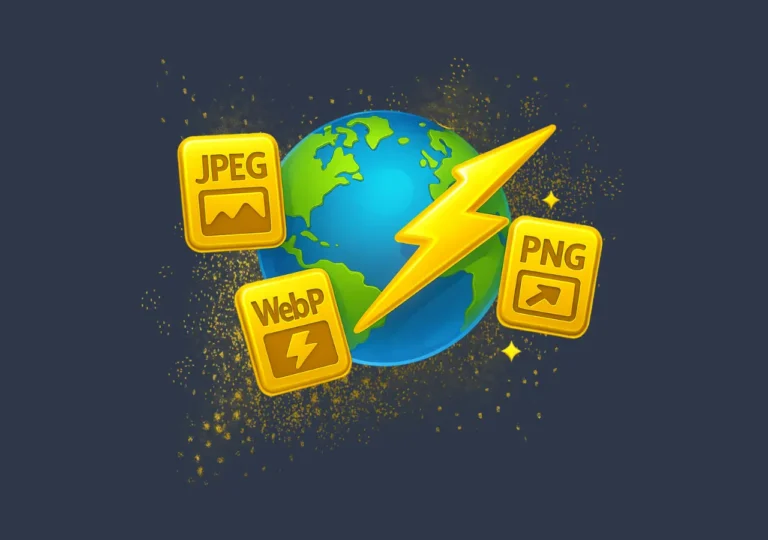
The false dichotomy: Quantity vs. Quality — a tired frame 🤔
People love a fight — apparently. The whole “quantity vs. quality” debate has become a kind of blogging sport, and yes, it’s dramatic, but often not very helpful. Here’s the thing: treating these two as mutually exclusive is like arguing whether breathing or sleeping is more important. Weird, right? Blogs need both — in different measures, at different times, and for different goals. That doesn’t mean there’s a single “best” ratio for everyone. Context matters — a lot. Publishers with millions of monthly visitors have to think about churn and scale; indie writers trying to build a niche audience often prioritize depth and trust. Both are legitimate choices, and both come with trade-offs.
So let’s stop pretending this is a boxing match where one side must be knocked out. Instead, try a strategy game — chess, not boxing. (Yes, I’m mixing metaphors. Sue me.) We’ll unpack what each approach gives you, where it hurts, and how to actually make decisions that align with your goals — without getting lost in jargon or productivity gurus’ manifestos. Sound good? Good. Let’s get into it.
Advantages of prioritizing quantity 📈
Publishing more often can feel like pouring gasoline on growth — fast and flashy. There’s real power in volume: more posts = more entry points for readers, faster feedback loops, and a steady pipeline of ideas being tested in the wild. For early-stage blogs trying to find a voice or a niche, quantity is a brutal but effective laboratory. Also, frequency helps with SEO basics (if you’re doing the rest right), and content variety increases the chances of striking the right chord with different audience segments.
When quantity shines
- Rapid experimentation: test topics, formats, headlines quickly.
- SEO breadth: more pages mean more keyword coverage.
- Audience habit formation: readers come to expect new content.
- Faster skill improvement: the writing muscle gets exercised.
Of course, quantity isn’t magic — it’s leverage. If your processes are sloppy, you’ll end up churning low-value posts that do more harm than good (spammy vibes, anyone?). But when paired with decent editing and a feedback system, quantity can accelerate learning and visibility. Hmm… where was I? Right — it works best when it’s smart volume, not frantic noise.
Advantages of prioritizing quality 🏆
Quality is the slow, patient friend who actually remembers your birthday. Deep, well-researched posts build authority, earn backlinks, and create long-term value. A few great articles can drive traffic for years, especially when they solve real problems or tell memorable stories. High-quality content also raises the bar for reader trust: people are likelier to subscribe, share, or convert after encountering usefulness and craft.
When quality wins
- Evergreen value: posts that rank and convert over time.
- Trust and authority: stronger credibility with readers and peers.
- Higher conversion rates: a premium post can move people to act.
- Reputation building: great writing gets recommended more often.
But quality takes time. It demands research, editing, visuals, sometimes interviews — and that might slow your publication cadence. Still, if your goal is long-term brand equity or selling higher-ticket offers, quality isn’t optional. It’s a foundation. You might not win a short-term traffic sprint, but you can earn a lasting compound interest in audience value.
Disadvantages and risks of both sides ⚖️
Every strategy has downsides, and both quantity and quality bring baggage. Quantity without standards becomes thin soup — lots of content but little nourishment. Reader trust erodes if posts are sloppy, repetitive, or clickbaity. On the flip side, quality-focused blogging can be an expensive solo sport: slow output may stunt reach and make growth feel glacial, especially if distribution systems (email, social, SEO) aren’t working.
Common pitfalls
- Quantity-only: audience fatigue, diluted brand, poor SEO from thin content.
- Quality-only: slow growth, missed topical opportunities, burnout.
- Poor measurement: not tracking what matters (engagement, conversion).
- Process gaps: no editorial calendar or feedback loop.
And don’t forget the human cost. Writers and creators burn out trying to hit impossible output targets or agonize over every pixel. Work-life balance matters, and long-term sustainability should be part of your strategy. So yes, both approaches have blind spots — plan for them.
Practical middle paths: hybrid strategies that actually work 🔀
If you’re tired of picking sides, consider blending. Hybrid strategies let you enjoy the velocity of quantity while anchoring with the trust of quality. For example, keep a steady rhythm of short, low-effort posts (news digests, quick tips, micro-updates) and reserve deeper, flagship content for less frequent publication. Think of shorter posts as warm-up sets and epic posts as the heavyweight match.
Blends that scale
- Pillar + cluster: 1–2 long pillars + multiple shorter cluster posts.
- Fast experiments + slow masterpieces: test ideas cheaply, then invest in winners.
- Repurposing: turn long posts into micro-posts, threads, newsletters.
- Editorial cadence: schedule different types of content on purpose.
Another clever tactic: use data to guide where to invest time. If a short post picks up traction, expand it into a comprehensive resource later. And don’t ignore republishing or updating — that’s a quality move that leverages quantity work you already did. Sounds interesting, right? It really is a pragmatic way to have your cake and eat it too.
Metrics that matter — beyond vanity numbers 📊
Clicks are easy to love but lousy at predicting value. Instead of obsessing over raw post counts or traffic spikes, focus on engagement, retention, and impact. Who’s coming back? Who’s reading past the fold? Who’s taking action? Those metrics tell you whether your content strategy is working, not just that it’s visible.
Key metrics to track
- Time on page and scroll depth (engagement signals).
- Return visitors and email list growth (retention).
- Social shares and backlinks (amplification).
- Conversions: signups, downloads, sales (business impact).
And a quick note: sample size matters. A single hit post can skew averages. Look at trends over time and segment by content type. If short posts are bringing in lots of casual traffic but no conversions, while long posts drive signups — that matters. Use that insight to tweak your mix.
Operational tactics: systems that let both thrive 🛠️
You can win at both quantity and quality if you build the right systems. Processes reduce cognitive load and keep standards high even as volume grows. That means templates, checklists, an editorial calendar, and a simple review loop. Outsource where it makes sense (editing, design) and keep the core creative work in-house if it’s your brand voice at stake.
Tools & practices
- Editorial calendar with content pillars and deadlines.
- Templates for quick posts and checklists for quality checks.
- Repurposing workflows to squeeze more value from each long post.
- Feedback loops: reader comments, analytics reviews, A/B testing.
One practical setup: allocate two days for a long post each month, and use the remaining weeks for short-form pieces and distribution. Or batch-create short posts in a single session — it’s surprisingly effective. Small process wins compound over time — a little structure goes a long way (and yes, that’s work, but not the soul-crushing kind).
Decision framework: how to choose what’s right for you 🎯
Stop copying influencers and start answering three simple questions: what’s your goal, who do you serve, and what resources do you have? Your answers guide the mix. If you’re building brand awareness fast, tilt toward quantity with quality safeguards. If you’re selling high-value services, lean quality and use fewer, higher-impact pieces. And if you’re somewhere in between, use a hybrid rhythm guided by data.
Quick decision checklist
- Goal: traffic, authority, conversions, or community?
- Audience: casual browsers vs. deeply invested readers?
- Resources: time, budget, and collaborators?
Finally, be willing to experiment: set time-bound tests and iterate. If a heavier quantity phase doesn’t move the needle, scale back and invest more in quality. If deep posts don’t attract an audience, try outreach, repackaging, or a slight increase in cadence. Adjust, adapt, repeat. It’s not magic — it’s applied common sense.
Examples and case studies — quick wins you can copy ✨
Real-world examples help. A niche tech blog I know published daily short tutorials for six months (quantity), then turned the top performers into a comprehensive course (quality). Result: a steady audience and a product that sold. Another indie writer focused on semimonthly long-form essays and built a loyal paid newsletter — slow but sustainable. Different paths, same principle: match format to goal.
| Strategy | Outcome | Why it worked |
|---|---|---|
| High cadence shorts | Fast traffic growth | Broad keyword coverage, quick feedback |
| Low frequency flagship posts | Deep authority & conversions | High production value, evergreen appeal |
| Hybrid (pillar + cluster) | Balanced growth & trust | Repurposing potential, SEO synergy |
Copy the shapes, not the specifics. Patterns repeat: test, promote, then invest. And remember — distribution often matters more than whether you wrote 5 posts or 1 post. A great post that no one sees is still lonely.
Final thoughts: make the debate productive, not tribal 🔄
Tribal debates are cozy but rarely useful. Instead of picking sides, ask practical questions and build systems that let you adapt. Quantity and quality aren’t enemies; they’re tools. Use them according to your goals, audience, and resources. Track the right metrics, protect your creative energy, and be willing to iterate. Your blog is an experiment — treat it like one. Tweak, learn, and repeat. You’ll get there.
FAQ: Quantity vs. Quality in Blogging
Neither is better on its own. You need both, depending on your goals, audience, and resources.
It works when you want fast growth, quick feedback, and SEO coverage.
Too much quantity without standards leads to thin content, reader fatigue, and weak SEO.
Because quality builds trust, authority, and long-term value. A single strong post can bring traffic and conversions for years.
It’s slow and resource-heavy. If you only publish rarely, growth may stall.
Yes. A hybrid strategy works: short posts for reach and experiments, long posts for authority.
Track engagement, conversions, and retention — not just clicks or post counts.
Start with your goal, audience, and resources. Test different mixes and adjust based on results.
Okay, I could keep ranting, but I’ll stop — for now. If you need customized content for your blog (focused on SEO, product-driven growth, or newsletter-focused strategies), try our AUTO-POST-SEO plugin. No more ado. Got a deal?






